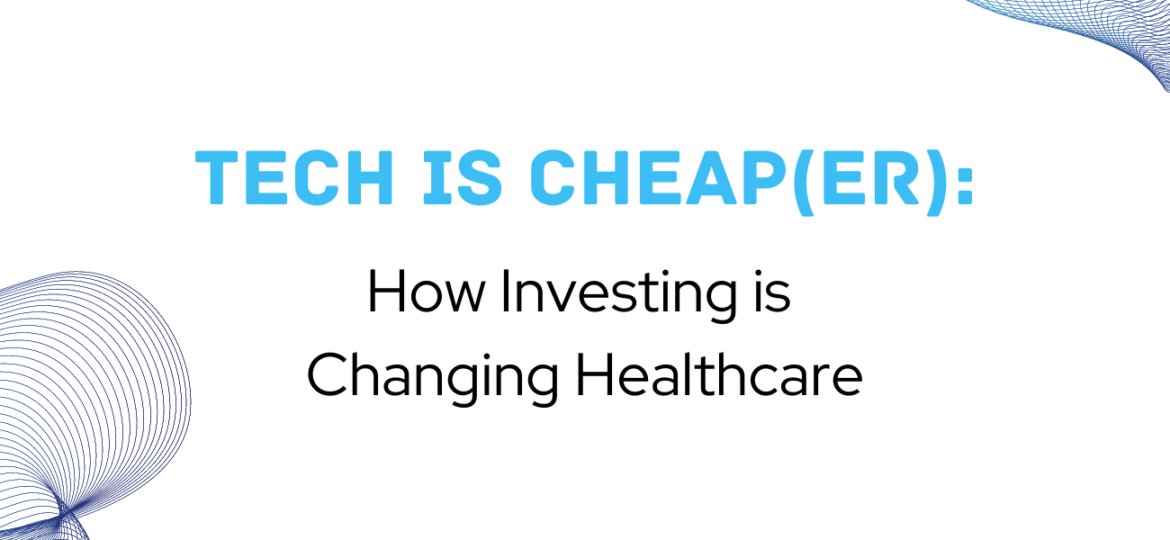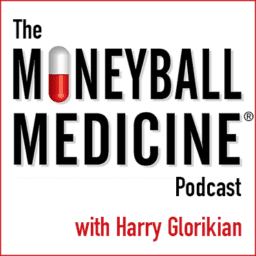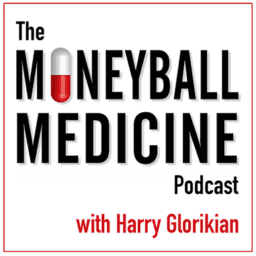
Tech is Cheap(er): How Investing is Changing Healthcare
The intersection of technology with virtually every other industry produces a unique effect: the costs of doing business decrease in relation to the output. This is largely driven by the deflationary impact of technology. The price of raw goods might increase, but the costs associated with bringing the final product to market decreases because tech makes it easier for manufacturers to source cheaper materials and use robotics to make the manufacturing process more efficient and less costly per unit. One needs only to look at the automobile industry to understand how technology lets manufacturers do more with less. The number of human workers on assembly lines has shrunk as robots take over many repetitive or dangerous tasks.
Healthcare is no exception and it’s transforming the industry, and in particular, the startup culture. Entry into the ecosystem doesn’t necessitate deep pockets because the costs of associated technology continue to fall. A twist of the old adage “Talk is Cheap” is “Tech is Cheap” and it gets cheaper every year.
The crowded genetic and genomic testing environment is a case in point.
The international Human Genome Project spawned breakthrough technologies which have paved the way for sequencing giants like BGI and Illumina. DNA sequencing costs followed Moore’s Law, the concept that computing power doubles every two years while costs stay relatively flat or decline, for the first several years. But with the advent of next-generation (or even next-next generation) sequencing technologies, the costs of sequencing an entire genome has dropped precipitously. Where it once took millions of dollars to sequence the human genome, it can now be done for <$1000, and the two biggest players in the industry, Illumina and BGI, are pushing the cost below $100.
In genomics, the rapid decline of costs has enabled a boon of testing companies. In 2018, a Concert Genetics report found that more than 15 new tests were launching each week, a pace that is expected to continue, and even increase, as sequencing technology becomes even more accessible. Consequently, the technological and financial barriers to the field are lowered, both for those seeking the funding and for those providing it.
In the life sciences, as with other industries, the added computational power plays as much a role as the decreasing costs. Quite simply, the technology is making it possible to do more things and at a quicker pace than even a few years ago. The rapid use of artificial intelligence would not have happened if the computational power was at the same level as it was in 2010, or even 2015. Every new chip or graphics card released, and the scalable power of cloud and edge computing add to the confluence of falling tech prices and increased tech capabilities.
The Rise of Quantum and New Computing Architectures
Although computational power has increased dramatically, the rise of artificial intelligence will soon reach a point where traditional computer chips, even those in the style of the new Apple M1 chip which uses ARM (advanced RISC machine) architecture, will struggle to keep up. Alternatives are being developed, including light-based chips that use the physics property of interference to perform calculations at rapid-fire and without the buildup of heat or execessive electricity. This could have significant energy implications for server farms, rooms with hundreds or more networked servers, that currently handle most cloud-based AI development and consume enormous amounts of electricity—both to run the machines and also to keep the rooms at frigid temperatures which dissipate the heat generated from the computers.
Beyond the capabilities of new computer chips or architectures, quantum computing offers another solution. Healthcare heavyweight Cleveland Clinic is betting on quantum computing to support its Digital Accelerator, a new venture to speed up the rate of scientific and healthcare research. Quantum computing is in its infancy with many potential use cases, but there are few examples of its actual application. Researchers from Google demonstrated their quantum Sycamore chip was capable of solving a task in a little over 3 minutes that would take most supercomputers today more than 10,000 years to achieve. The clear benefits over traditional chip-based technologies and potential to transform the rapidity of healthcare and life sciences research (among other industries) makes quantum an alluring option for startups.
Investing in the Future
Even as these changes are making it easier and less risky for investors to enter the new industries, at some point you have to fund growth. However, once you’ve created a basic model and demonstrated it works, adapting it can be less expensive and faster than starting over. Aria Pharmaceuticals (previously TwoXar) is showing how it can be done: leveraging the technology to build a drug discovery pipeline across more than a dozen therapeutic areas.
If the $20 genome became technically possible tomorrow, it would cause explosion of ideas in the industry—new ideas to take forward. As next-generation sequencing technologies in the mid-2000s led to today’s crowded genomic testing industry, computer architectures and quantum computing will lead to new opportunities and new players. Getting ahead of the investing curve requires understanding of how technological changes and decreasing costs are shifting the business landscape today and big-picture creativity to see where these changes will make the biggest impact tomorrow.



